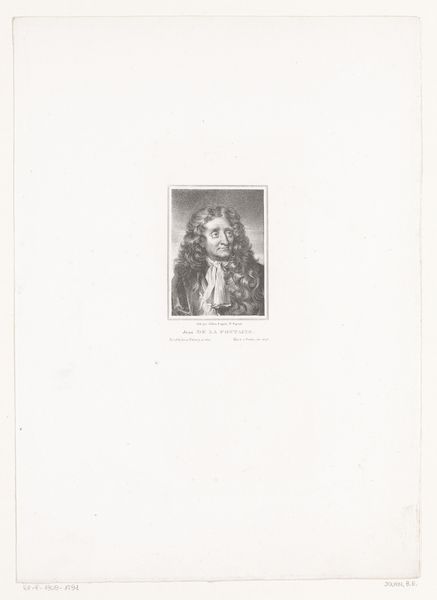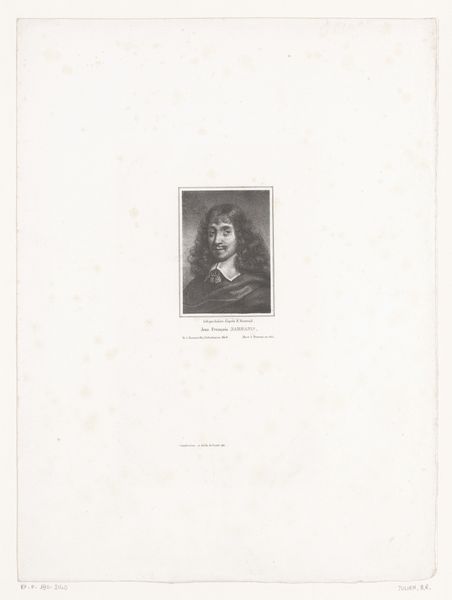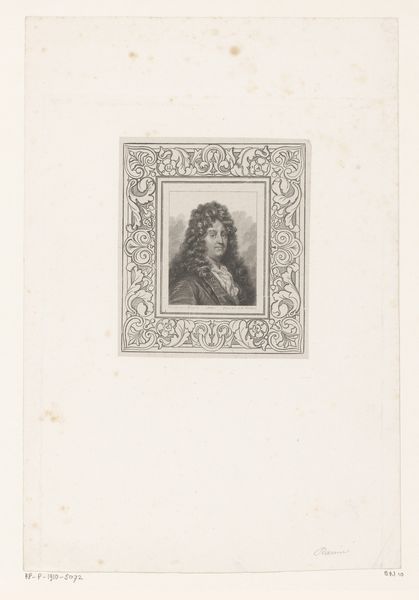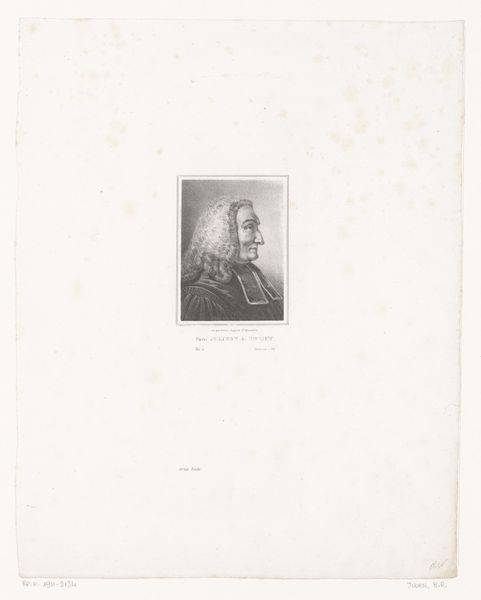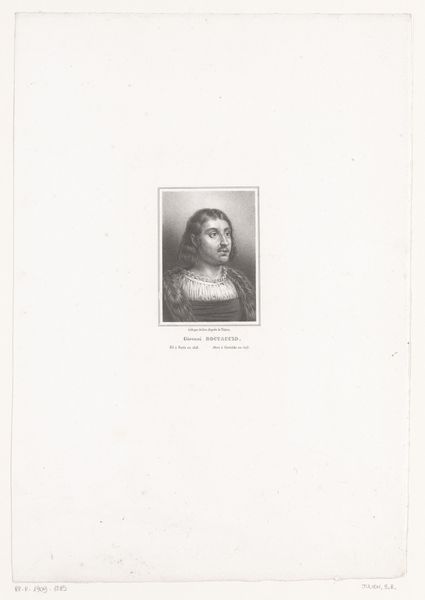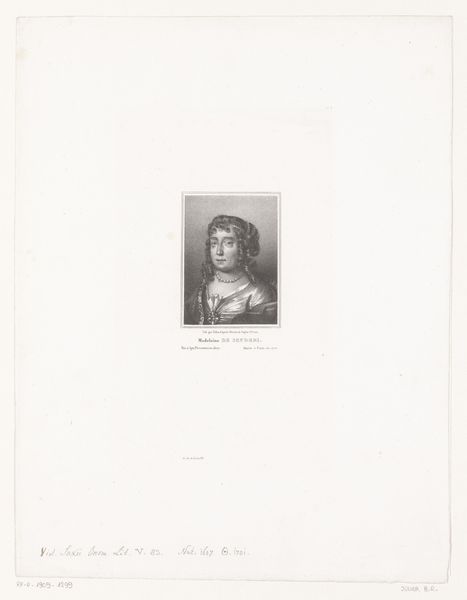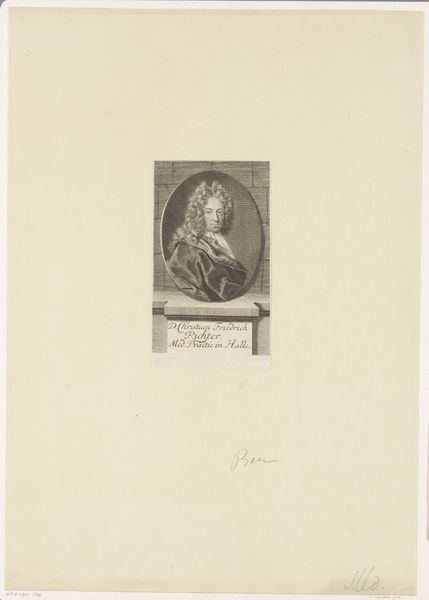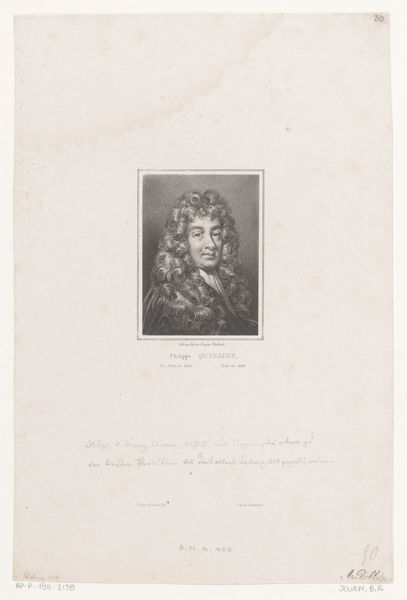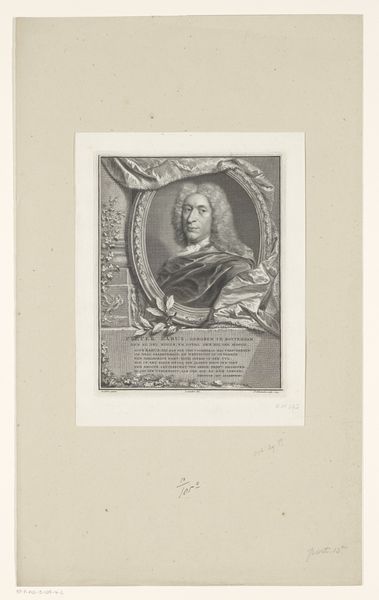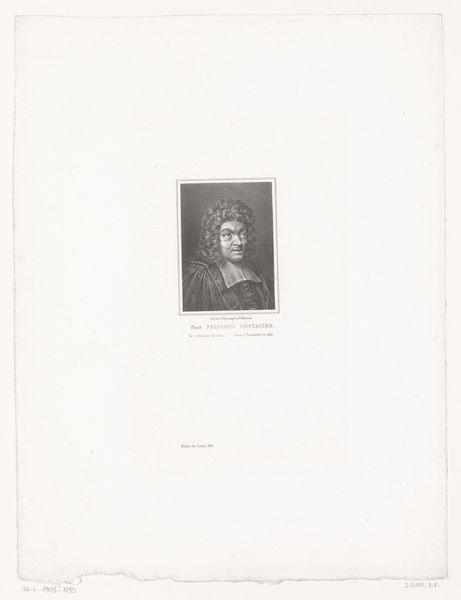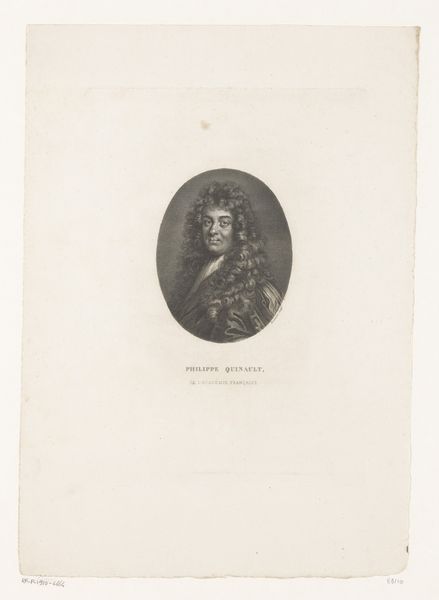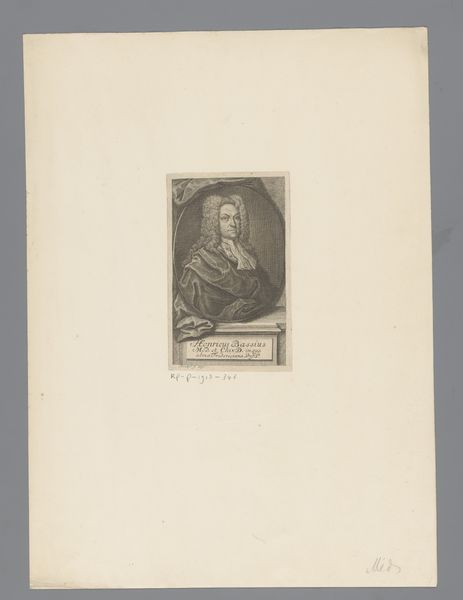
drawing, print, engraving
#
portrait
#
photo of handprinted image
#
drawing
#
neoclassicism
# print
#
old engraving style
#
engraving
Dimensions: height 333 mm, width 250 mm
Copyright: Rijks Museum: Open Domain
Curator: Looking at this engraving, there’s something almost haunted about the face, even through the formal presentation. What do you think? Editor: Perhaps the mark of genius? Bernard Romain Julien created this portrait of Nicolas Boileau-Despréaux in 1830. It is currently held in the Rijksmuseum collection. As a formal engraving, of course, it reflects the period’s interest in Neoclassicism. But what interests me are those darker undercurrents. Curator: Undercurrents indeed! Consider the weight of all that carefully rendered, cascading hair. It speaks to an era but also smothers. The contrast creates a striking image—very dark and brooding against that bright clothing. But is that what was intended, or is it simply the weight of time acting upon the image? Editor: It certainly draws attention. I would argue the intention, especially given the socio-political landscape of post-revolutionary France, might have involved a desire to critique authority—though in a very coded and subtle fashion suitable to a portrait meant for public consumption. The symbolic meaning of that heaviness is worth unpacking. Boileau, after all, was the Poet Laureate of Louis XIV, celebrated for upholding tradition, the old ways. Curator: A symbol of established power, exactly! He represents order and restraint. The choice to depict him, so much later, could have been read as a comment on societal shifts in power, but the way the portrait’s made might itself comment on the symbolism of its subject. The engraving is so clean, it reflects both Boileau's famous sense of order but the cultural importance that that has within a culture seeking guidance or rules. Editor: I concur, Julien's Neoclassical formality allows for this double reading. There is beauty in form but also a challenge of authority. The politics of imagery are very revealing in this case! What do you see as the enduring element? Curator: Its resonance, for sure, I am still finding new, subtle threads between those layers of interpretation. Editor: And I appreciate a visual representation of how culture and authority play with memory. Thank you.
Comments
No comments
Be the first to comment and join the conversation on the ultimate creative platform.
